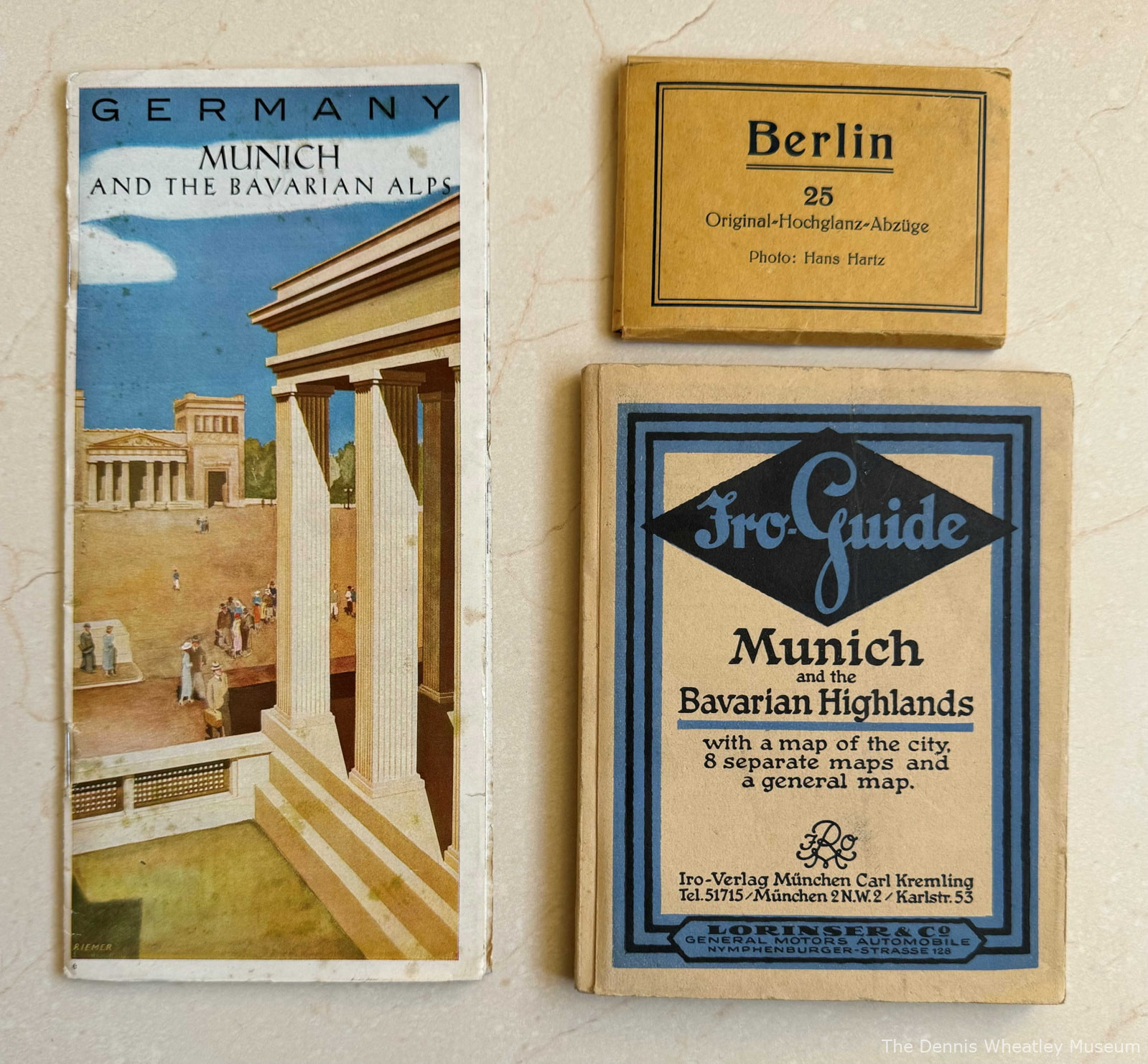
 |
Floor Plan |  |
The Dennis Wheatley 'Museum' - Dennis Wheatley's Writing Technique
Research
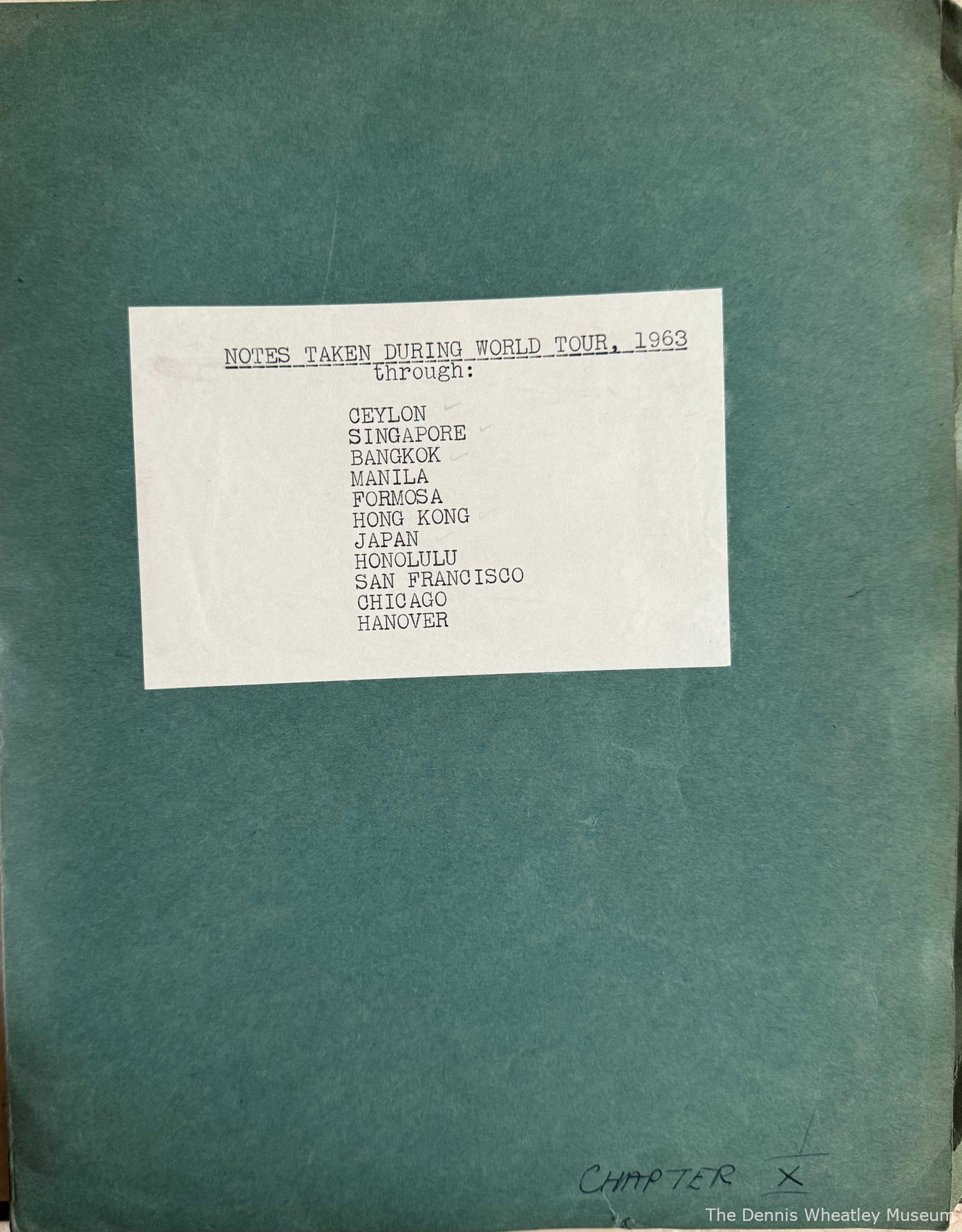
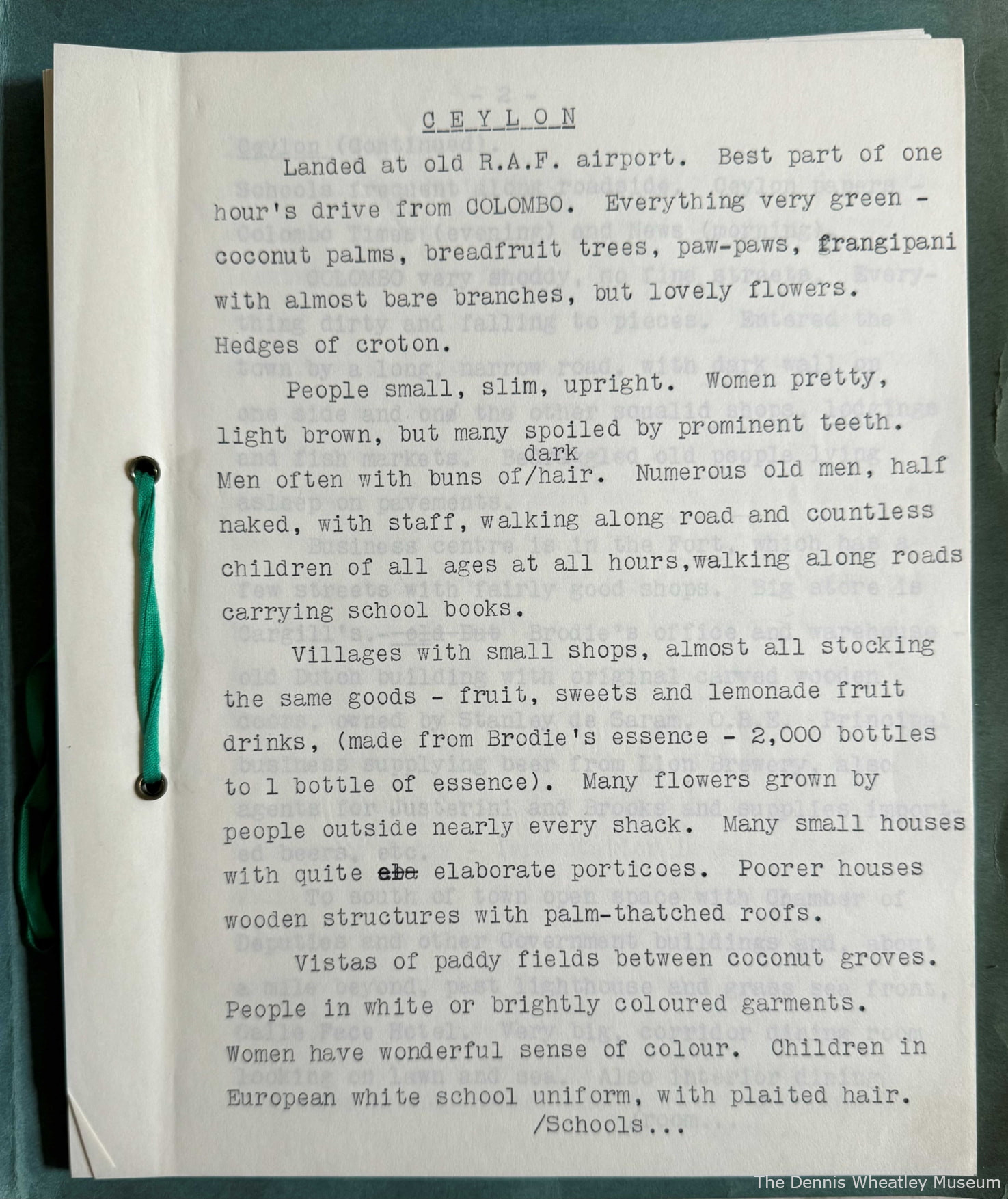
The opening page of DW's travel notes on Ceylon from his 1963 World tour
Click on the images to enlarge
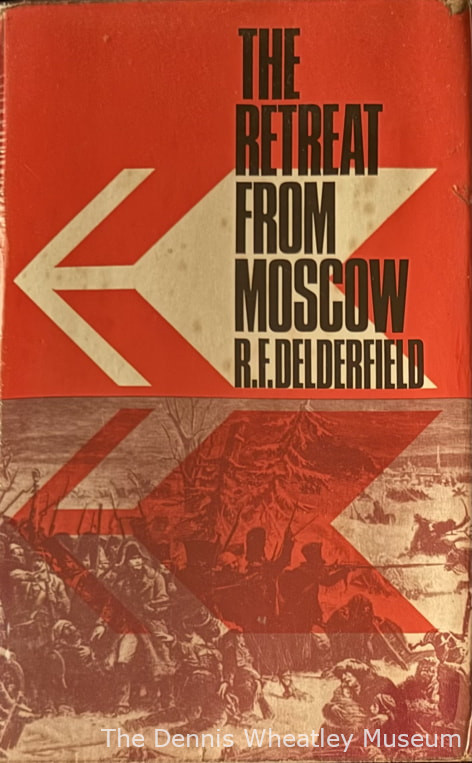
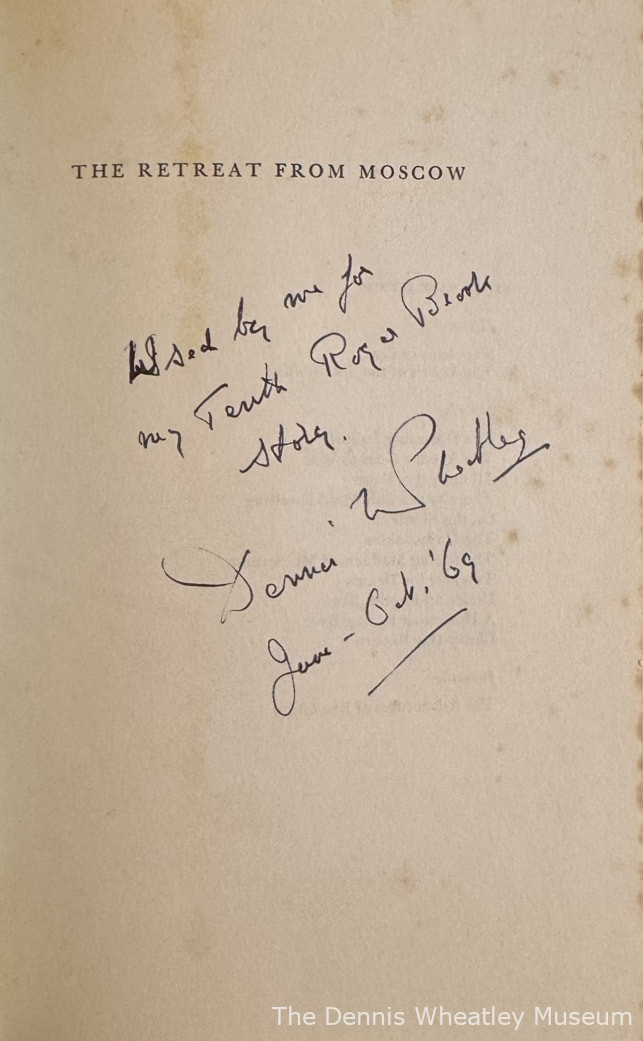
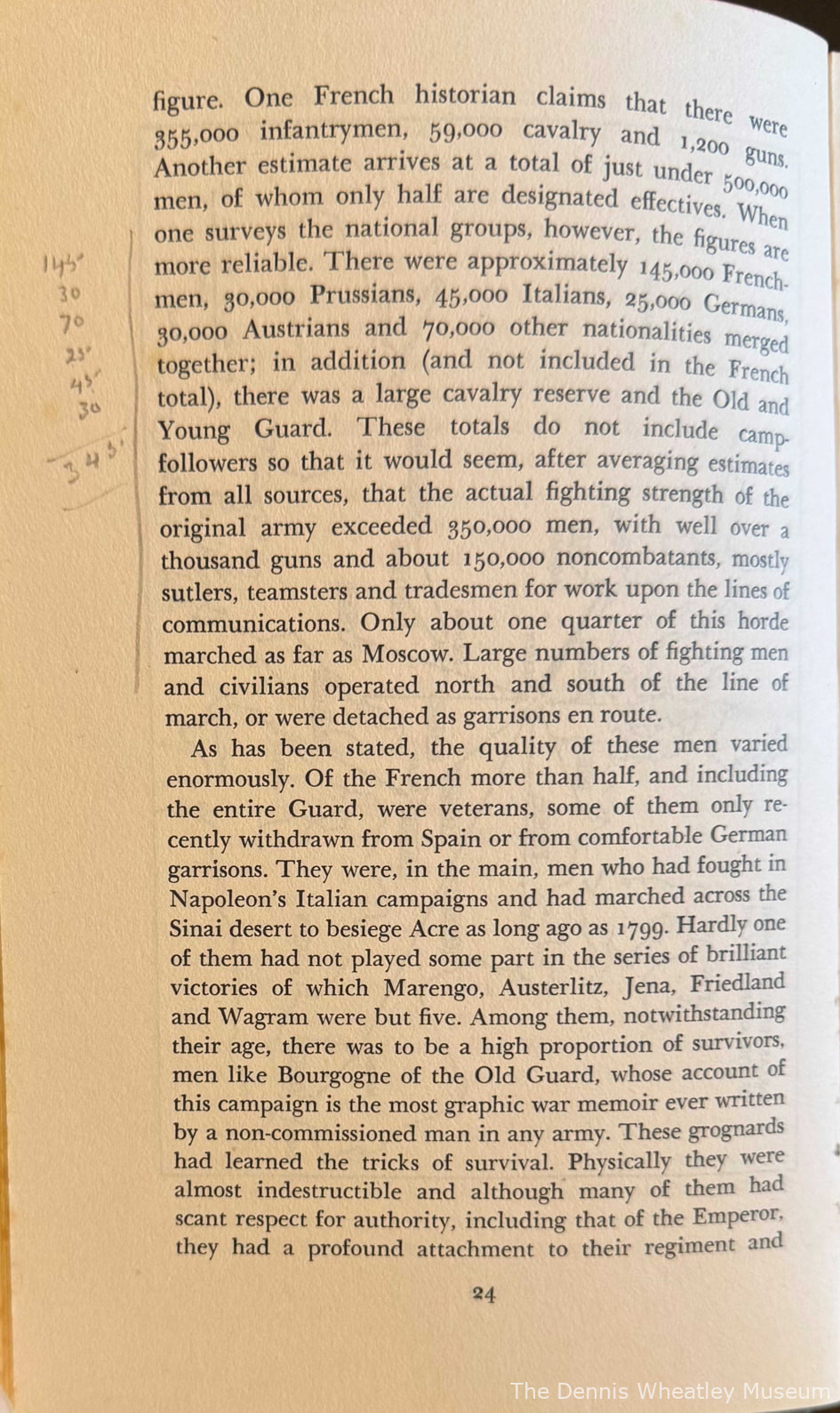
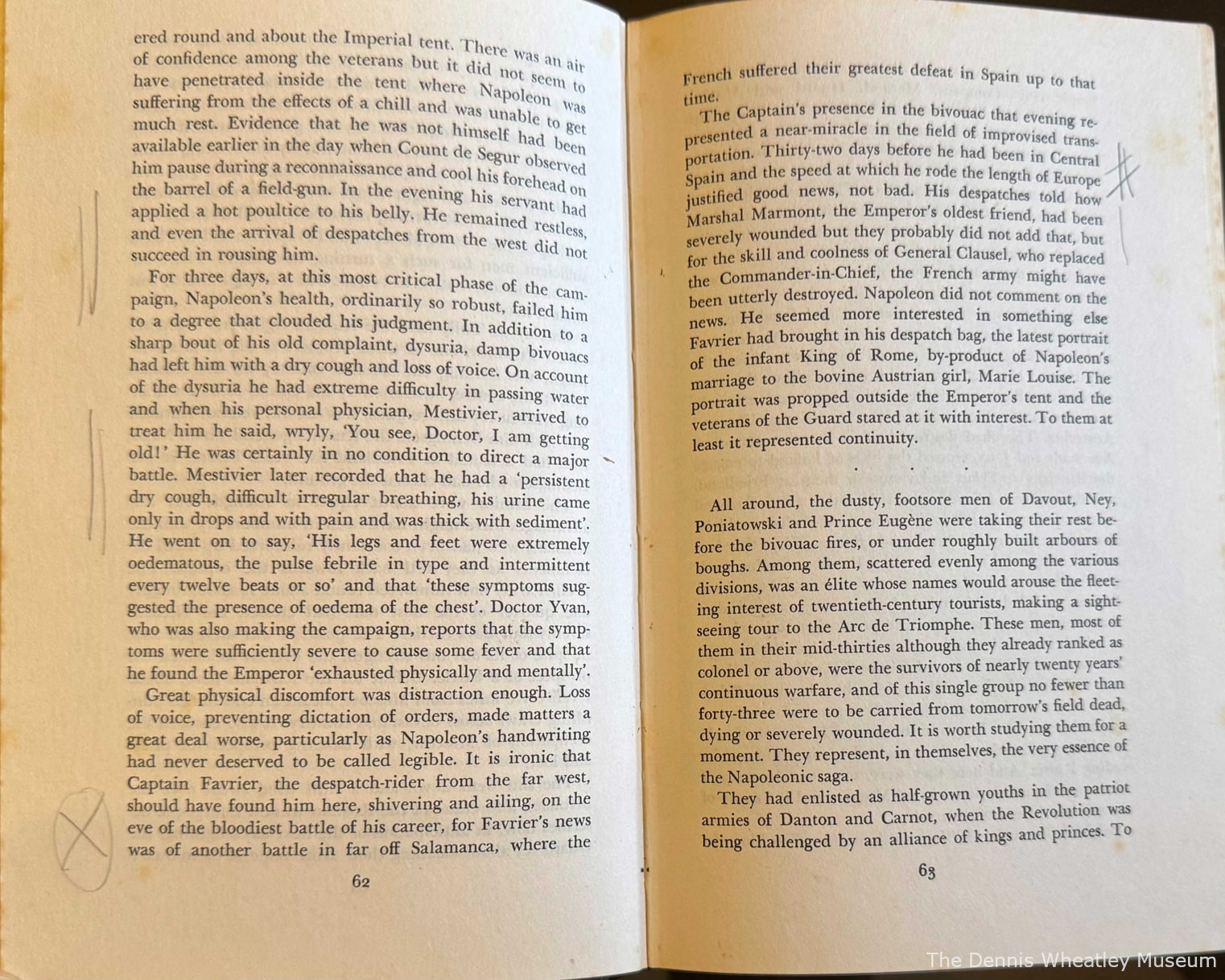
One of the books DW consulted to get his facts right when he was writing 'The Ravishing of Lady Mary Ware' (1971)
In many such books, DW made pencil annotations of the interesting points. Where books had them, DW would read and sometimes also annotate the Notes and Footnotes as well as the main text.
Click on the images to enlarge
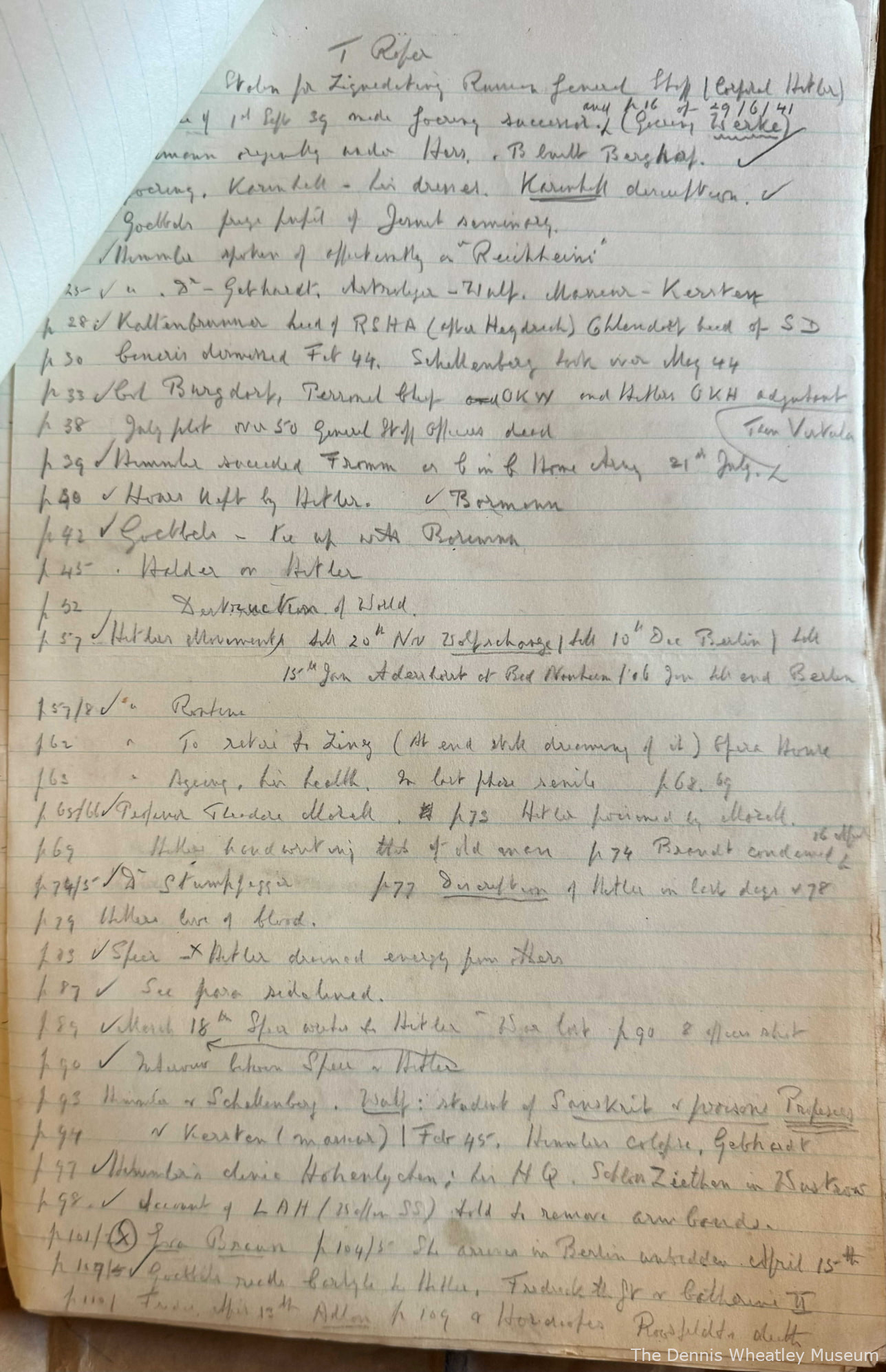
...and sometimes while he was reading, as for example when he was researching 'They Used Dark Forces' (1964), DW made extensive notes
Click on the images to enlarge
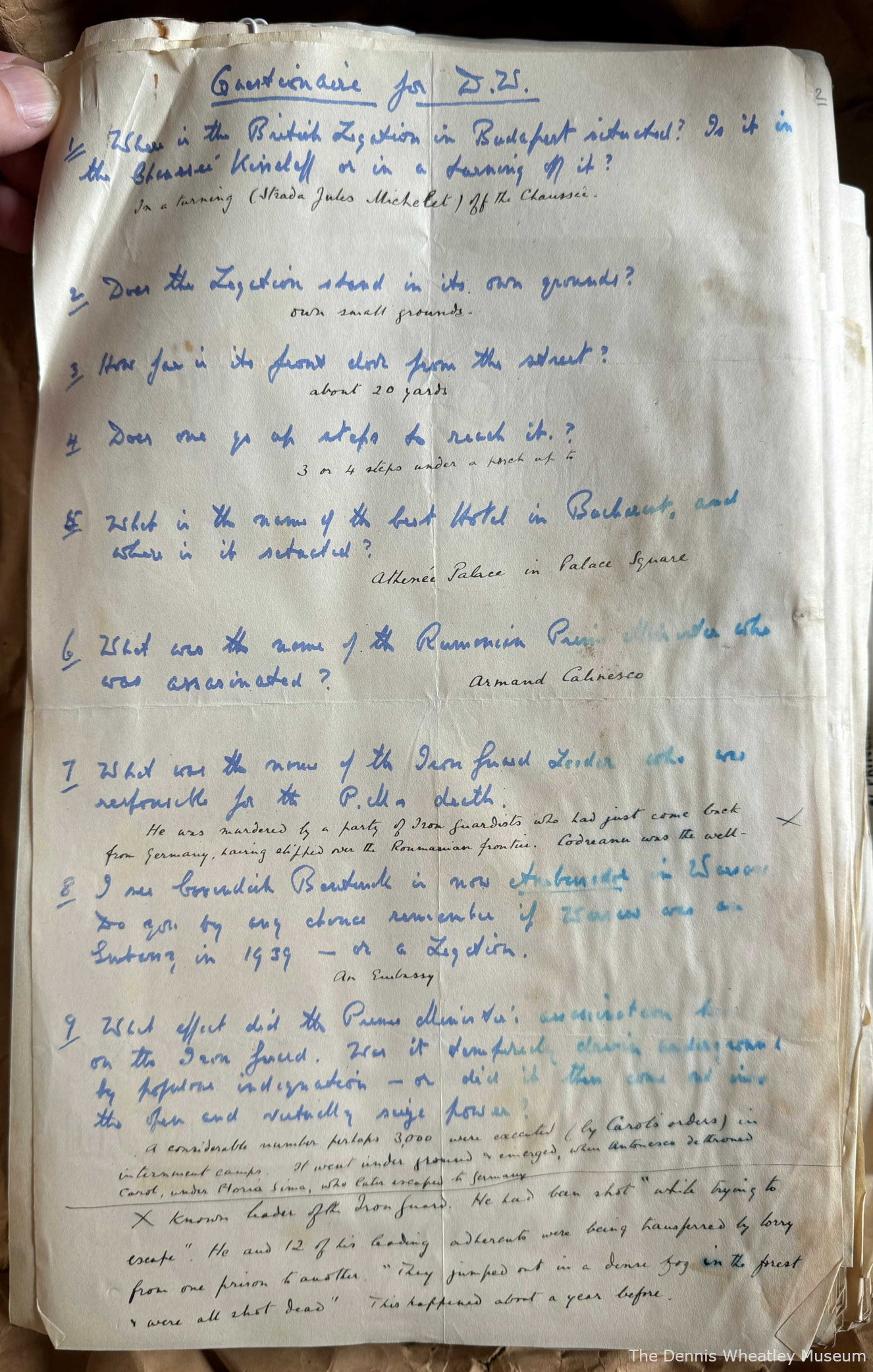
The questionnaire DW sent to Sir Reginald Hoare when he was researching 'Codeword Golden Fleece' (1946)
DW even asked how far the doors of the British Legation in Budapest were from the street
Click on the images to enlarge
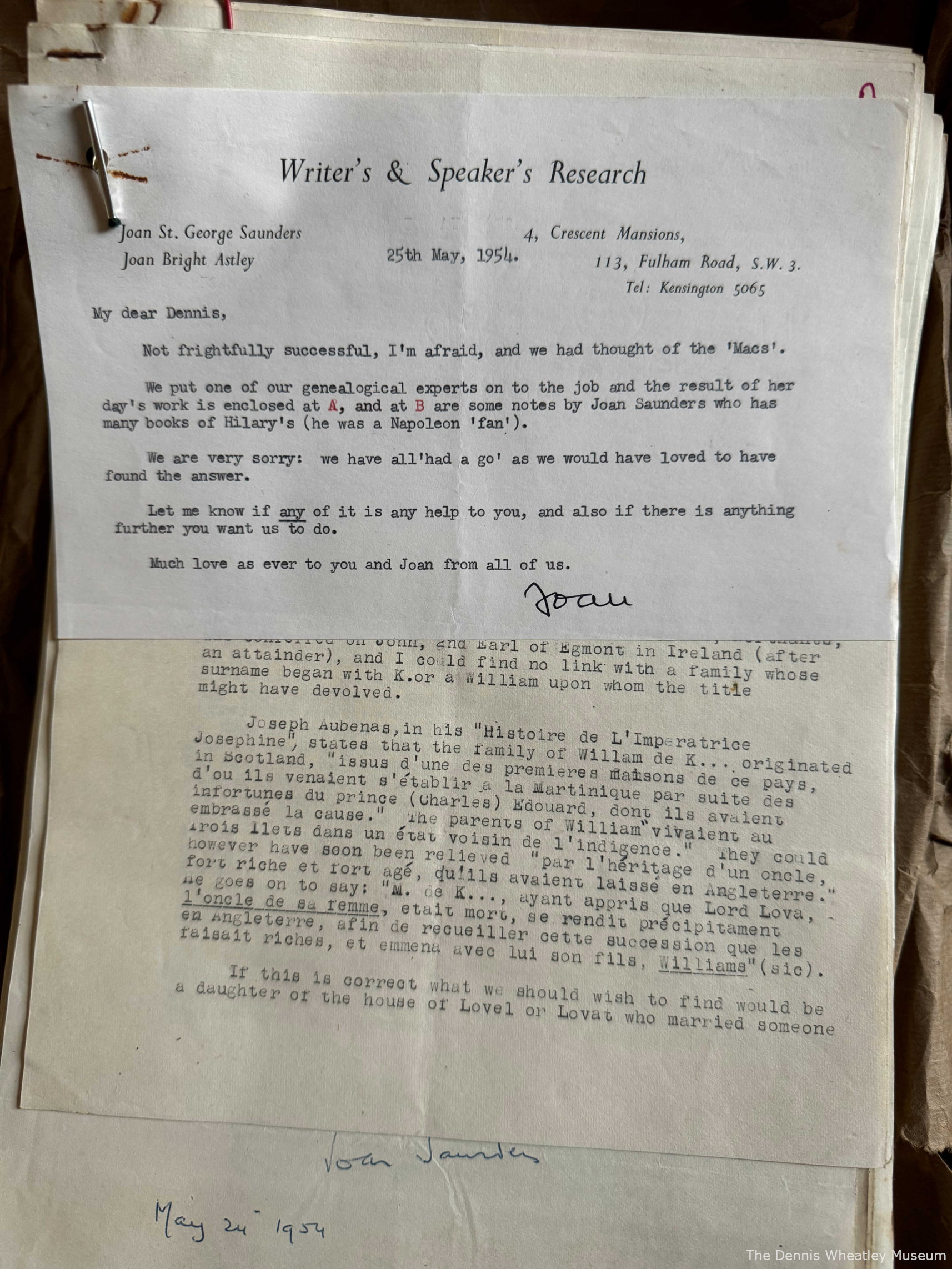
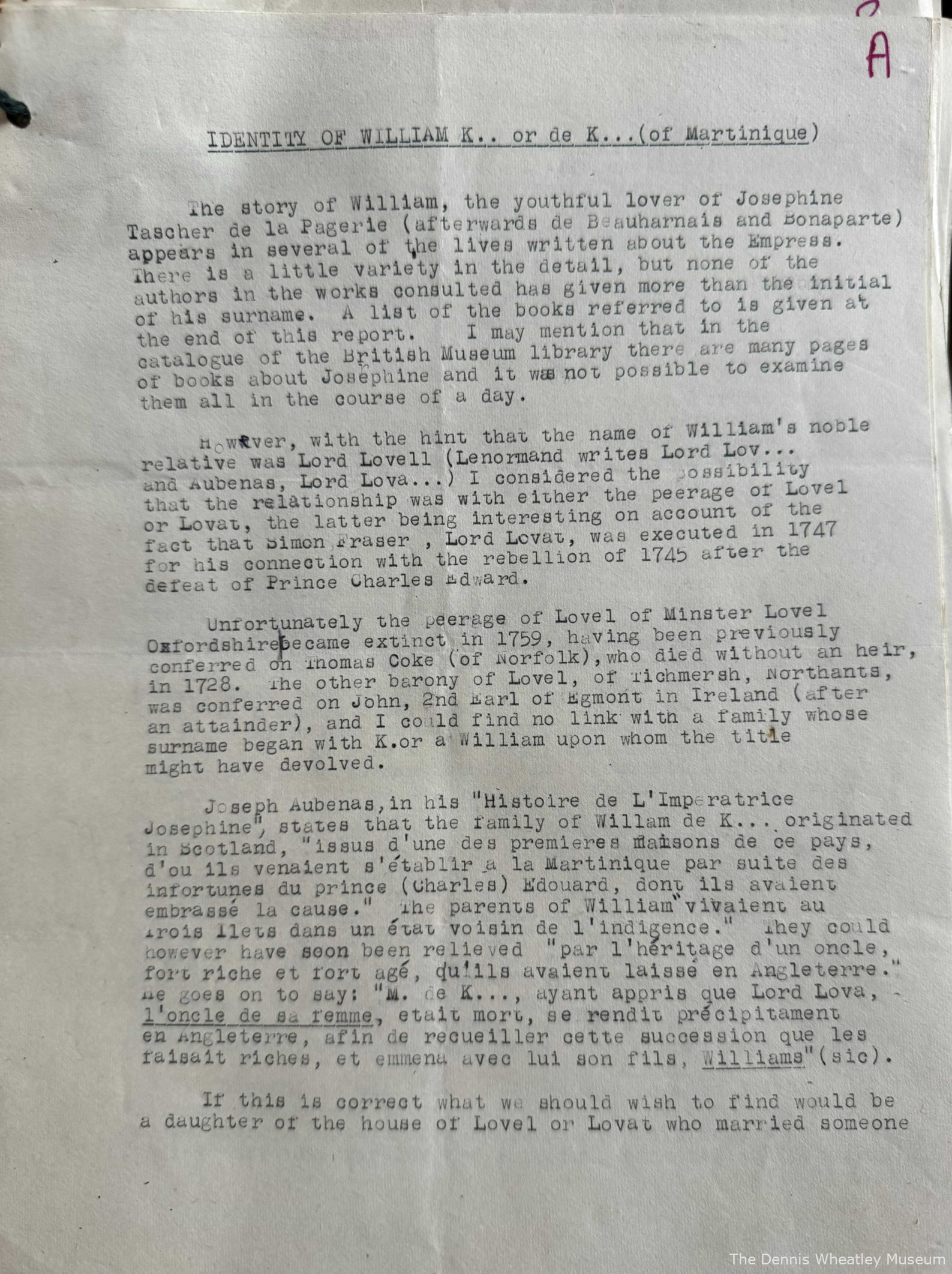
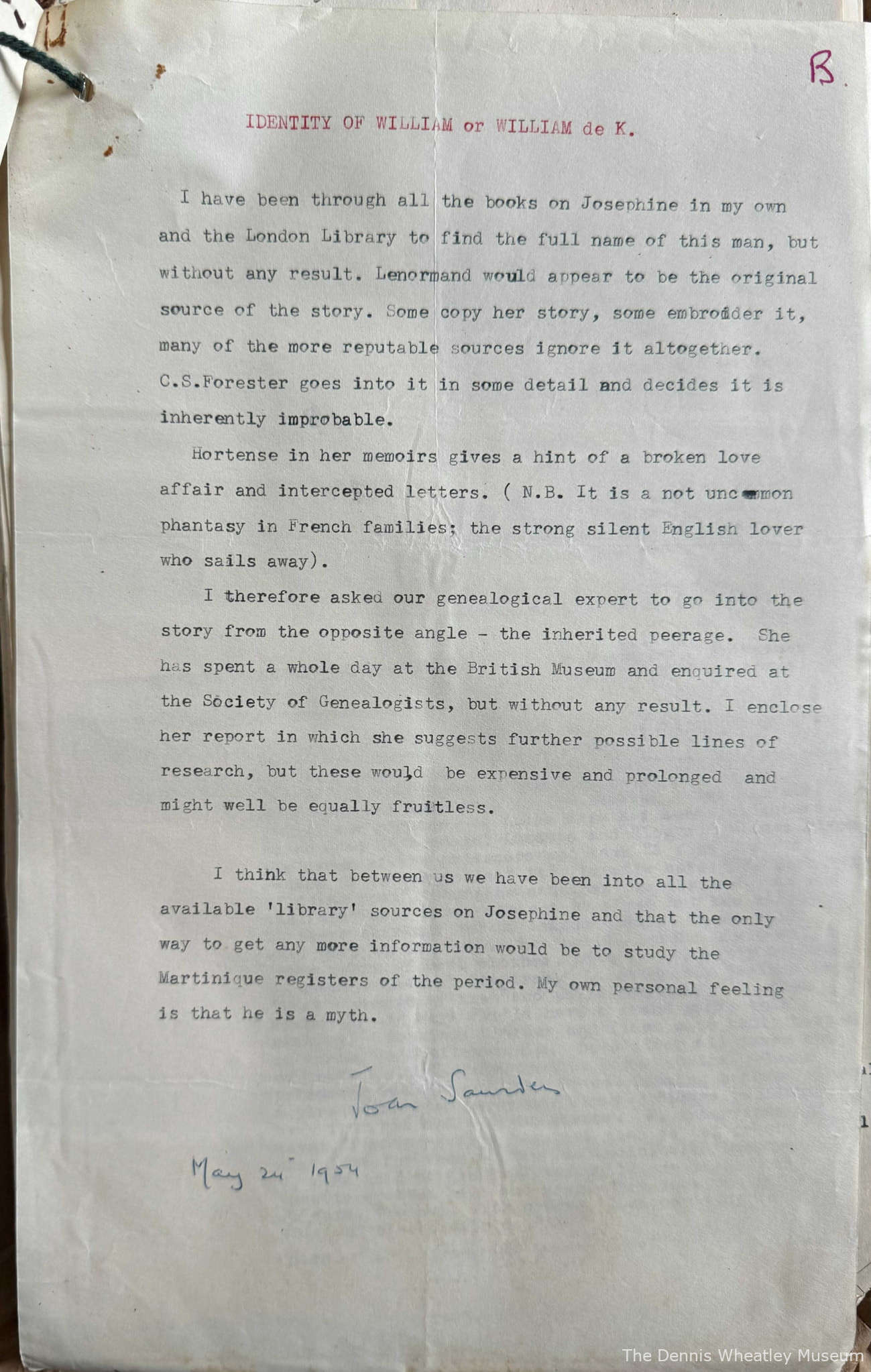
DW commissions some private historical research when writing 'The Dark Secret of Josephine' (1955)
Click on the images to enlarge
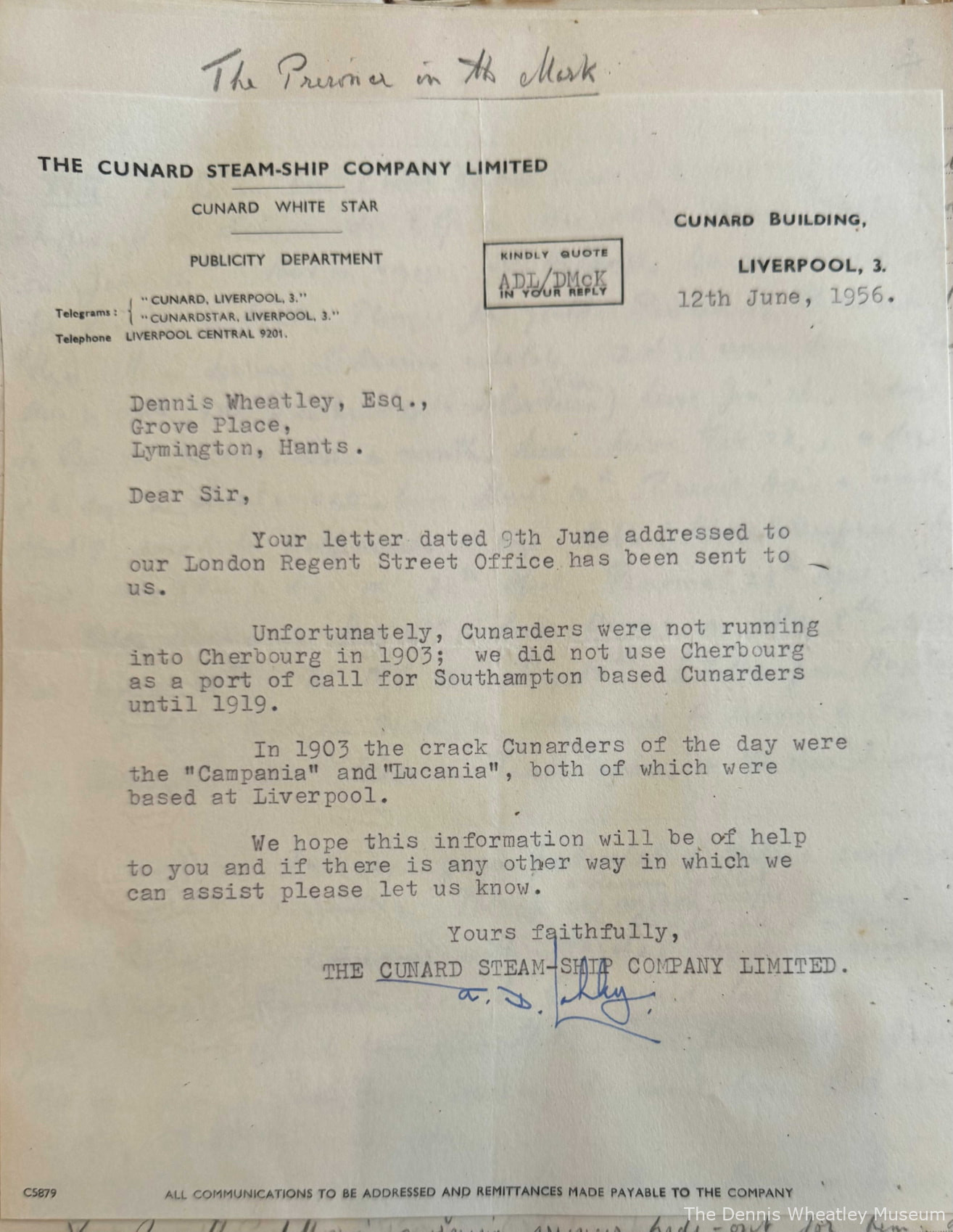
DW asks Cunard which liners were running on various routes in 1903 when writing 'The Prisoner in the Mask' (1957)
Click on the images to enlarge
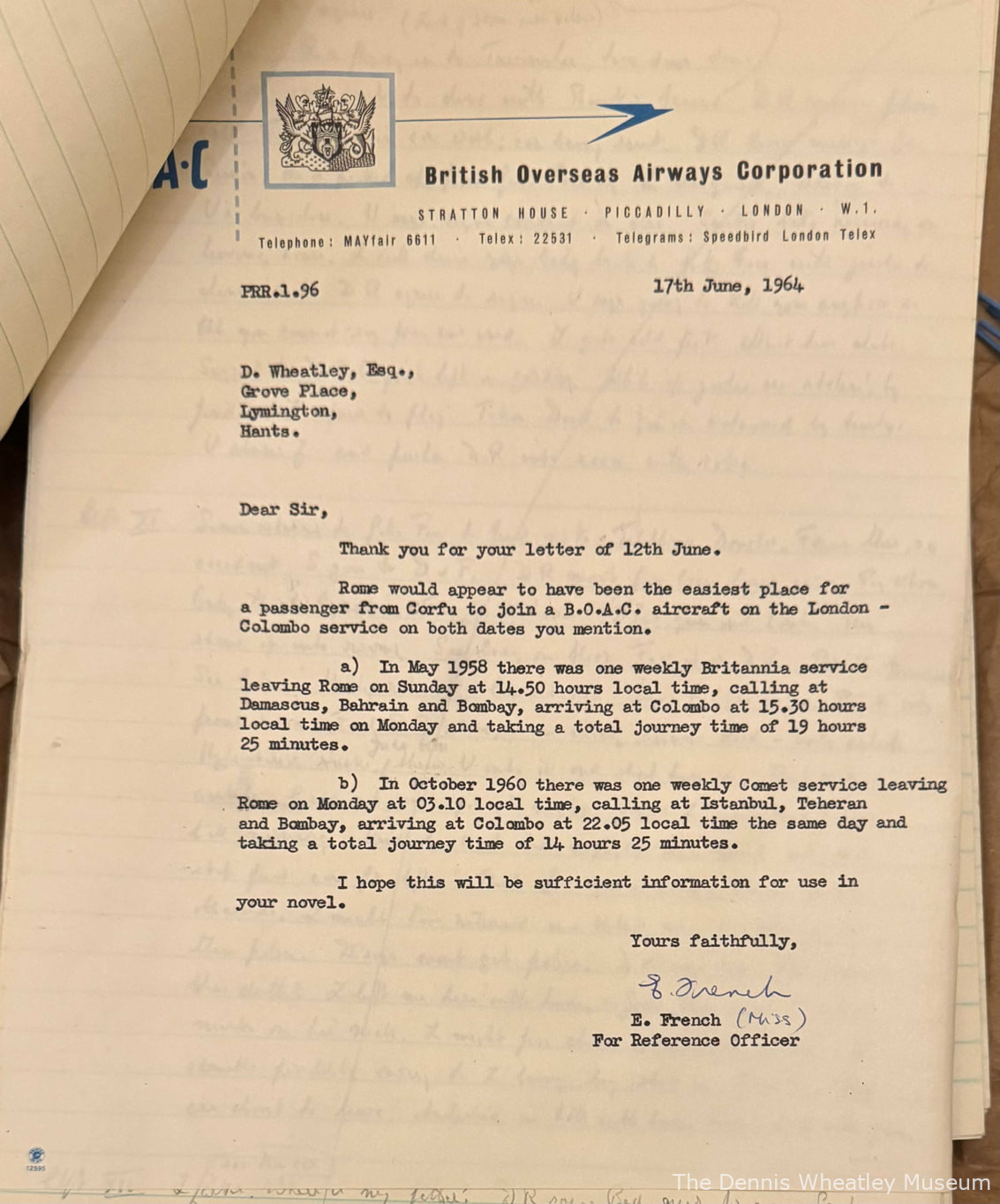
DW checks what flights the Duke might have taken between Corfu and Ceylon on various dates in 1958 and 1960 when writing 'Dangerous Inheritance' (1965)
Click on the images to enlarge
A later exhibit will address DW's plot preparation, but before anything else, once he had selected the principal characters and the topic for his next novel, DW would do his research.
DW habitually did an enormous amount of research, and he was meticulous in his quest for accuracy in his books, sometimes going to extraordinarily (and surely commercially unwarranted) lengths in order to achieve this.
As DW observed in his Cantor lecture:
'The success of The Forbidden Territory and other books of mine such as The Eunuch of Stamboul and The Secret War show that it is perfectly possible for an author to collect enough local colour to create an accurate background without having been to the country about which he is writing. But it means many hours of delving into travel books, poring over maps and, above all, having long talks with reliable observers who have lived in the country concerned.'
DW researched the geography and history he included in his mainstream adventure novels and the proper backgrounds for his historical novels (on which more later), but he researched when he was writing about science fiction (when he wrote 'Star of Ill Omen', his technical data, while seeming dated now, was at the time totally up-to-date), spiritual matters (DW got Joan Grant and her then husband Charles Beatty to read the typescript of 'Strange Conflict' to see if they considered anything he had written to be wrong), or pretty much anything else, even in cases where his Publisher's Professional Readers thought they were or little relevance to the plot (on which see a later exhibit).
Some examples of the lengths that DW went to in his pursuit of accuracy when he was writing his novels are shown above.
Not shown, but to further the point, when DW wrote 'The Irish Witch', he sought information on the various native American tribes and their languages from an authority on the subject in New York. He wanted to get every detail right.
Like Ian Fleming after him, and unlike the vast majority of his those before or after him, you could rely on DW for accuracy when he put something factual (as against something fictional which was written to dovetail into something factual) in his books.
As well as consulting his friends, research agencies and/or commercial organisations when he wanted to check specific facts, DW always retained the ephemera from his travels so that he could consult them at a later date, and when DW was an established writer, he kept detailed notes on his travels which he could later use for background to his novels, which he had his secretary type up.
All this was additional to the research that DW did in his own library, and if DW did not already have the appropriate books in his library, he would either go out and buy them or borrow them from a lending library.
As an earlier Special Exhibition shows, DW had an extensive library of fact as well as of fiction, and late in life he annotated his books to note which he had used in his research for his various novels.
The books DW consulted started with a dozen reference books/sets of reference books (encyclopedias, thesauruses, dictionaries, atlases etc). One of these alone, the enormous Dictionary of National Biography, consisted of twenty-three large volumes.
According to the Blackwell's catalogue, DW made use of roughly a hundred books while writing his Roger Brook novels, and a further twenty-six while writing his stories with Occult backgrounds.
Listed below to give a flavour of the research DW carried out in his library are the numbers of books that he annotated as his having consulted when writing a selection of his titles, as gleaned from the annotations listed in Blackwell's sale catalogue of his Library in 1977:
| Title | No. books from DW's library used |
| The Second Seal | 20 |
| The Man Who Killed The King | 16 |
| They Used Dark Forces | 14 |
| The Quest of Julian Day, Mayhem in Greece | 13 |
| The Sultan's Daughter | 12 |
| The Eunuch of Stamboul, They Found Atlantis, Star of Ill Omen | 7 |
| The Forbidden Territory | 4 |
| The Fabulous Valley, The Island Where Time Stands Still, Bill For The Use Of A Body | 3 |
| Contraband, The Man Who Missed The War | 1 |
| Such Power is Dangerous, Black August, The Haunting of Toby Jugg, The Strange Story of Linda Lee | 0 |
DW clearly enjoyed this aspect of his writing, and he never lost the appetite for serious reading which Gordon Eric Gordon-Tombe had instilled in him in his earlier years.
| References: | DW's Cantor Lecture of 27th April 1953 on 'The Novelist's Task', reproduced in The Journal of the Royal Society of Arts Vol CI No. 4908 of 18th September 1953. |
| Provenance: | Private Collections |
